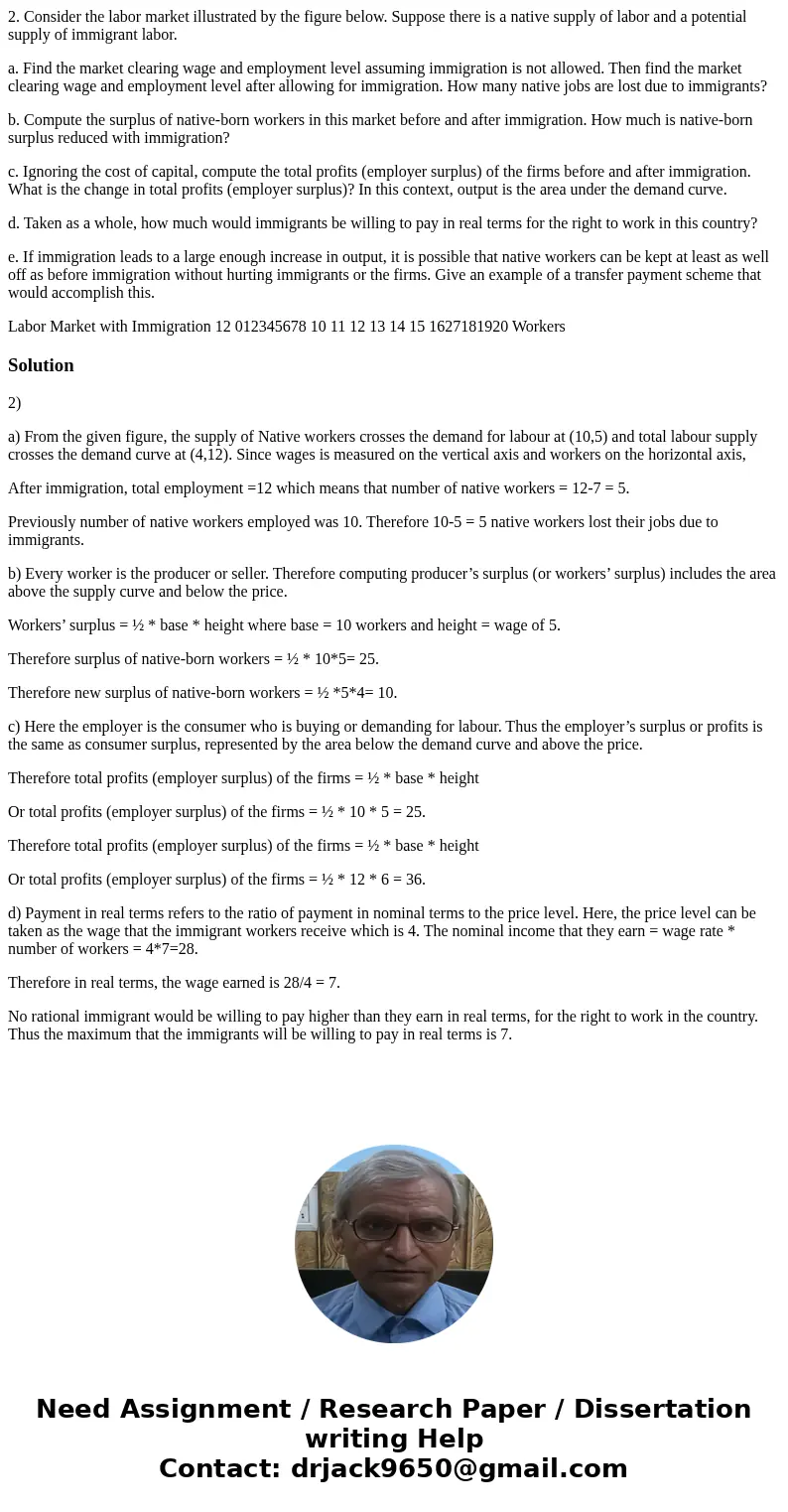2 Consider the labor market illustrated by the figure below
2. Consider the labor market illustrated by the figure below. Suppose there is a native supply of labor and a potential supply of immigrant labor.
a. Find the market clearing wage and employment level assuming immigration is not allowed. Then find the market clearing wage and employment level after allowing for immigration. How many native jobs are lost due to immigrants?
b. Compute the surplus of native-born workers in this market before and after immigration. How much is native-born surplus reduced with immigration?
c. Ignoring the cost of capital, compute the total profits (employer surplus) of the firms before and after immigration. What is the change in total profits (employer surplus)? In this context, output is the area under the demand curve.
d. Taken as a whole, how much would immigrants be willing to pay in real terms for the right to work in this country?
e. If immigration leads to a large enough increase in output, it is possible that native workers can be kept at least as well off as before immigration without hurting immigrants or the firms. Give an example of a transfer payment scheme that would accomplish this.
Labor Market with Immigration 12 012345678 10 11 12 13 14 15 1627181920 WorkersSolution
2)
a) From the given figure, the supply of Native workers crosses the demand for labour at (10,5) and total labour supply crosses the demand curve at (4,12). Since wages is measured on the vertical axis and workers on the horizontal axis,
After immigration, total employment =12 which means that number of native workers = 12-7 = 5.
Previously number of native workers employed was 10. Therefore 10-5 = 5 native workers lost their jobs due to immigrants.
b) Every worker is the producer or seller. Therefore computing producer’s surplus (or workers’ surplus) includes the area above the supply curve and below the price.
Workers’ surplus = ½ * base * height where base = 10 workers and height = wage of 5.
Therefore surplus of native-born workers = ½ * 10*5= 25.
Therefore new surplus of native-born workers = ½ *5*4= 10.
c) Here the employer is the consumer who is buying or demanding for labour. Thus the employer’s surplus or profits is the same as consumer surplus, represented by the area below the demand curve and above the price.
Therefore total profits (employer surplus) of the firms = ½ * base * height
Or total profits (employer surplus) of the firms = ½ * 10 * 5 = 25.
Therefore total profits (employer surplus) of the firms = ½ * base * height
Or total profits (employer surplus) of the firms = ½ * 12 * 6 = 36.
d) Payment in real terms refers to the ratio of payment in nominal terms to the price level. Here, the price level can be taken as the wage that the immigrant workers receive which is 4. The nominal income that they earn = wage rate * number of workers = 4*7=28.
Therefore in real terms, the wage earned is 28/4 = 7.
No rational immigrant would be willing to pay higher than they earn in real terms, for the right to work in the country. Thus the maximum that the immigrants will be willing to pay in real terms is 7.

 Homework Sourse
Homework Sourse